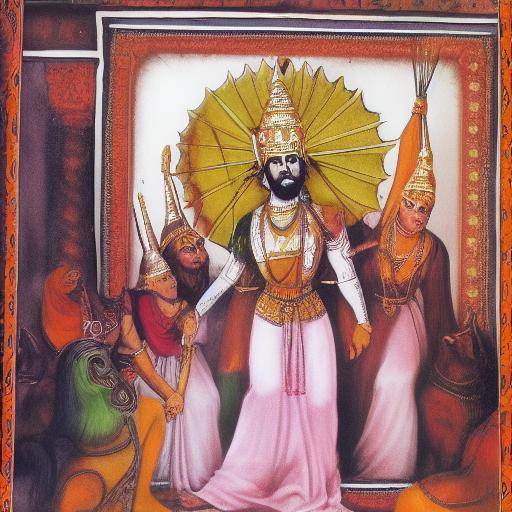
Sati is a controversial practice that has intrigued historians, anthropologists and academics for centuries. In this article, we will explore in depth the concept of widows, funeral pyres and the prohibition of this practice in ancient India. We will discover its history, the cultural and religious aspects surrounding it, as well as the current and future implications.
Introduction
The Sati, also known as “suttee”, was a funeral practice in ancient India where widows were immolated in their husband’s funeral home. Although this practice dates back centuries, its cultural, religious and social ramifications remain a source of debate today.
In this article, we will undertake a thorough analysis of the different aspects of this practice, from its history to its contemporary implications and the ban that has taken place in India. We will explore the concept of widows, funeral pyres and prohibition from a historical, cultural and social perspective, giving the reader a complete and balanced understanding of this controversial issue.
History and Background
The practice of Sati goes back to ancient India, where it was considered an act of devotion and loyalty of widows to their deceased spouses. Through the centuries, this practice acquired a cultural and religious meaning rooted in the Hindu tradition. Historical accounts show a complex evolution of attitudes and perceptions towards the Sati, ranging from veneration to censorship by different sectors of Indian society.
Historically, the Sati was backed by religious figures and leaders, which made it a practice rooted in society. However, over time, dissident voices were generated that questioned this custom, which eventually led to its ban by the British colonial authorities in the nineteenth century. This milestone marked a turning point for the practice of Sati in India.
Deep analysis
The Sati has been the subject of debate not only in historical and cultural terms, but also in relation to its social and ethical implications. Although some Sati defenders see it as an act of free will and devotion, most critics consider it an extreme form of oppression and discrimination against women.
The analysis of funeral pyres and their meaning in Hindu religion reveals a rich complexity in their symbolic and practical connotations. Moreover, the legal and legal aspects related to the prohibition of the Sati show a tough confrontation between tradition and modernity, as well as between religious freedom and human rights.
Comprehensive review
Sati's applications and case studies can be seen that shed light on various facets of this practice. Widow farms, funeral rituals and family traditions show a wide range of experiences and consequences. In exploring the Sati pros and cons, a complex portrait emerges that reflects the moral and ethical challenges involved.
Comparative analysis
By comparing the Sati with other funeral practices in different cultures, you can see significant similarities and contrasts. This provides a global perspective that enriches Sati's understanding in its historical and cultural context.
Practical Tips and Accessible Recommendations
For those interested in further deepening this issue, practical recommendations are offered that allow us to assimilate and address this issue in an informed and respectful manner.
Industry Analysis and Expert Reviews
Expert opinions and trends in academia and legal circles provide an updated and multifaceted view of the Sati and its impact on contemporary communities. The implications of the Sati remain the subject of study and analysis, leading us to consider future trends and possible developments in related attitudes and practices.
Conclusions and FAQs
In conclusion, the Sati is a fascinating theme that not only sheds light on ancient India, but also raises universal questions about tradition, religion, ethics and human rights.
Frequently asked questions
1. What is the historical meaning of the Sati in India?
The Sati was regarded as an act of devotion of widows to their deceased spouses, rooted in the Hindu religious tradition.
2. Why was the Sati banned in India?
The ban on the Sati in India was due to pressure from social sectors and colonial governments that considered this practice to be inhuman and contrary to the rights of women.
3. What role do funeral pyre play in the Sati?
The funeral pyre was the place where widows carried out the act of immolation as part of the Sati, symbolizing their devotion and loyalty.
4. How has Sati's perception evolved over time?
Sati's perception has evolved from acceptance as a devotional practice to condemn it as an extreme form of oppression towards women.
5. What is the contemporary impact of Sati in India?
Although the Sati is legally prohibited, its cultural and social implications remain the subject of analysis and debate in India.
6. What are the ethical challenges associated with the Sati discussion?
The ethical challenges include balancing respect for cultural diversity with the defence of universal rights, in particular women ' s rights.
In short, the Sati represents a term that transcends the barriers of time and culture, challenging humanity to reflect on the intersection between tradition, religion, ethics and fundamental rights. This article seeks to offer a comprehensive and balanced understanding of the Sati, enriching knowledge and fostering informed dialogue on this topic of historical and contemporary importance.
